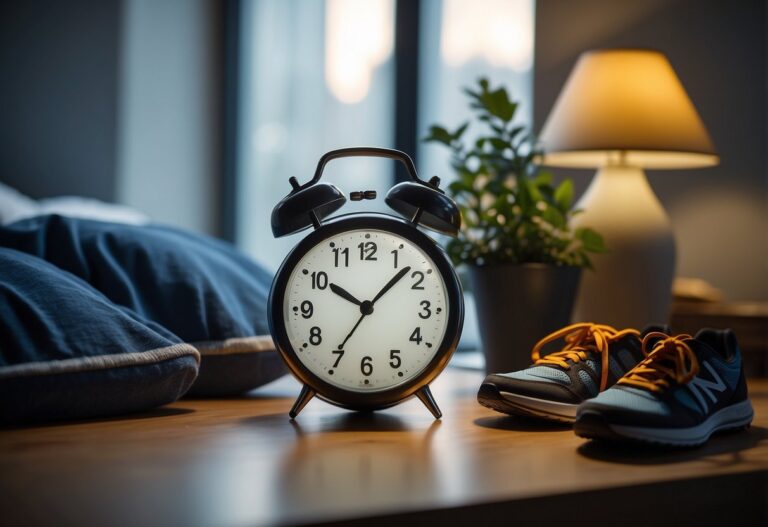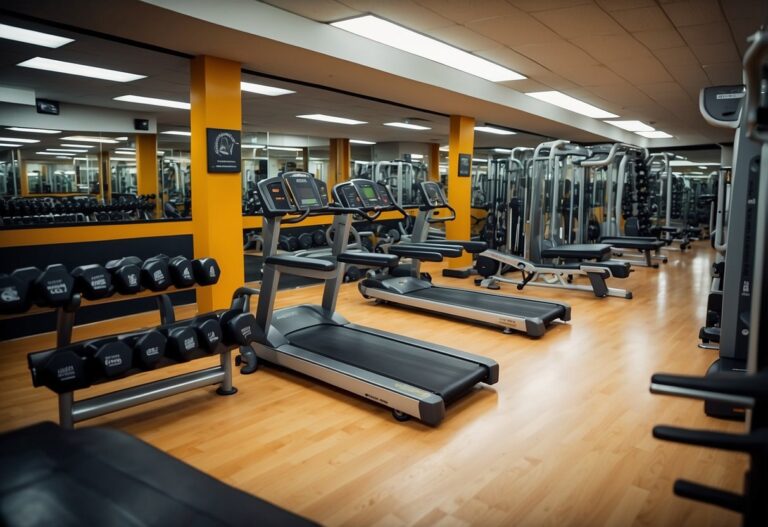Dealing with sore muscles after a workout is a common experience for many people who exercise regularly. Whether you’ve pushed yourself to new limits or simply tried a different routine, muscle soreness can follow a good workout session. Knowing how to manage this soreness can help you stay on track with your fitness goals.

You don’t have to suffer in silence after a tough workout session. There are several effective ways to alleviate muscle discomfort and promote recovery. By being mindful of your body’s needs and implementing a few practical tips, you can bounce back quicker and enjoy your next workout even more.
Stretching Routines
Stretching is crucial after a workout, helping to reduce muscle soreness and improve flexibility. Start with a gentle stretch like hugging your knees to your chest for about 30 seconds. This can be done while lying in bed or on a mat.
Try the Cat-Cow stretch if your back feels tight. Get on your hands and knees, arch your back (cat position), then drop your belly and lift your head (cow position). It’s great for easing tension.
Rolling your shoulders backward and forward for 15-60 seconds each can ease upper body stiffness. This simple move helps to release tightness and improve shoulder mobility.
Massage Therapy
Massage therapy can help ease sore muscles after a workout. It’s important to choose a massage type that suits your needs. Avoid deep tissue massages right after a tough workout, as your muscles are more prone to injury during this time.
Opt for gentler massages like Swedish or light oil massages. They can reduce muscle soreness, pain, and improve relaxation. Massages can also boost your immune system.
Consider how you feel after different types of massages. Finding what works best for you might take a few tries. Take it easy and listen to your body.
For more details, visit Verywell Fit.
Stay Hydrated
Drinking water is crucial after a workout. Your muscles need it to recover and stay healthy.
Electrolyte-rich drinks can be helpful, especially after intense sessions. These drinks replace lost minerals like sodium and potassium, which are important for muscle function.
Consider pairing salty snacks with water. Foods like pretzels or salted nuts help your body retain water, aiding in rehydration.
Remember to listen to your body. If you’re thirsty, drink. If you’re peeing dark yellow, you need more fluids. Keep a water bottle handy throughout your day to make sipping easy and natural.
Cold Baths
Cold baths can be a great way to ease sore muscles after a workout. You might have heard about athletes taking ice baths to recover faster. This practice involves immersing yourself in cold water, ideally below 15°C, for about 10-15 minutes.
The cold water helps by constricting blood vessels. This can reduce inflammation and muscle soreness. It’s especially helpful for reducing delayed onset muscle soreness (DOMS), which you might feel a day or two after a tough exercise session.
If you’re new to cold baths, start with shorter durations and cooler, not freezing, water. You can gradually decrease the temperature over time. It can be a bit uncomfortable at first, but many people report feeling much better afterwards.
Foam rolling
Foam rolling is a great way to ease muscle soreness after a workout. By applying pressure to your muscles, a foam roller helps reduce tension and soreness. It’s popular in gyms and can be easily used at home too.
To get started, place the foam roller under the muscle group you want to target, like your glutes or hamstrings. Use your limbs to move the roller slowly up and down the muscle.
If you find a tender spot, stop and hold for about 20 seconds. Then, continue rolling. This simple technique can make a huge difference in how your muscles feel.
Use Heat Therapy
Applying heat therapy to sore muscles can help you recover faster. Heat increases blood flow, delivering more oxygen and nutrients to the affected area. This promotes healing and reduces stiffness.
You might feel the warmth spreading through your muscles, providing comfort and easing pain. Heating pads, warm towels, or hot baths are great ways to do this.
After a tough workout, consider using heat therapy for 15 to 20 minutes. This can be especially helpful if you have chronic muscle soreness or tightness. Give it a try and see how it feels! For more details, visit this guide on heat therapy for athletes.
Rest and Recovery
Rest is crucial for muscle recovery. After a tough workout, your muscles need time to repair and grow stronger. Make sure to take breaks and avoid overworking the same muscle group. For example, if you do leg exercises one day, focus on upper body the next.
Sleep is vital for recovery too. Aim for 7-9 hours of quality sleep each night. During sleep, your body releases hormones that assist in muscle repair and growth.
Hydration also plays a key role. Drink plenty of water to stay hydrated and help flush out toxins from your body. Try to drink at least 8 cups of water a day.
Consider gentle stretching to keep your muscles flexible and reduce stiffness. Stretching after a workout can improve blood flow and release tension. Simple stretches like touching your toes or side bends can be effective.
By incorporating rest, sleep, hydration, and stretching into your routine, you can help your muscles recover more effectively. For more tips, check out this article on rest and recovery.
Proper Nutrition
Proper nutrition after a workout is key to your muscle recovery.
Protein is essential. Eating foods like grilled chicken, fish, or beans helps repair your muscles.
Don’t forget carbs to restore your energy. Whole grains, sweet potatoes, and oats are great choices.
Hydration is vital too. Drink plenty of water or a sports drink to stay hydrated.
Including foods rich in antioxidants like berries or tart cherry juice can reduce muscle inflammation. You can read more about the benefits of tart cherry juice here.
Gradual Cool-Downs
It’s essential to cool down gradually after a workout. This helps your body transition from exercise mode to resting mode without a shock.
Start with light jogging or walking. Do this for about 3 to 5 minutes to help your heart rate slow down steadily. You can find more detailed instructions on this approach by checking this Healthline article.
Consider slow step-ups or stair climbing at a gentle pace. This helps engage your lower body muscles without straining them. More information on these exercises can be found in this guide.
Remember to include stretching. Hold each stretch for 20 to 30 seconds. Stretching can ease muscle tightness and improve flexibility. If you want more guidance, visit this Barbend page.
Over-the-counter pain relievers
When your muscles are sore after a workout, you might reach for pain relievers. One popular choice is ibuprofen, which can reduce inflammation and pain.
Paracetamol, also known, can help with general body pain but doesn’t target inflammation like ibuprofen does.
Another option is aspirin, known for treating both pain and inflammation. Always check the dosage instructions and consult with a healthcare provider if you’re unsure which option is best for you.
Understanding Muscle Soreness
When you work out, your muscles might feel sore the next day. This section explains why that happens and the different types of muscle soreness you might experience.
What Causes Muscle Soreness?
Muscle soreness usually occurs because of small tears in the muscle fibres. These tears happen when you do activities that your body isn’t used to, like lifting heavier weights or trying a new exercise.
This damage is a normal part of building stronger muscles. The body repairs these tears, and your muscles become stronger and bigger as a result. The soreness you feel is part of this healing process.
Inflammation can also contribute to soreness. When muscles are damaged, the body sends more blood to the area to help with the repair, which can cause swelling and pain.
Another common cause of muscle soreness is the buildup of waste products. During intense exercise, lactic acid and other byproducts can build up in the muscles, contributing to the feeling of soreness.
Types of Muscle Soreness
There are two main types of muscle soreness: acute and delayed onset.
Acute muscle soreness happens during or right after exercise. This type can be due to the buildup of lactic acid. This soreness usually goes away after a short rest or a few hours.
Delayed onset muscle soreness (DOMS) sets in a day or two after exercising. It’s often more intense and can last several days. DOMS is usually caused by activities that put a lot of strain on the muscles, such as downhill running or heavy weightlifting.
While both types of soreness can be uncomfortable, they are normal and often a sign that your muscles are adapting and getting stronger.
Effective Recovery Techniques
To effectively recover after a workout, focus on specific techniques like stretching and maintaining proper hydration and nutrition. These strategies can get your body ready for the next exercise session.
Stretching and Flexibility Exercises
Stretching can significantly reduce muscle soreness and improve flexibility. After working out, spend time on gentle stretching exercises. Start lying in bed and gently hug your knees into your chest for about 30 seconds. This can help ease tension in your lower back and hips. Next, slowly lower your knees to one side while keeping your torso facing the ceiling for another 30 seconds. This twist helps release tight muscles in your back.
Including dynamic stretches before your workouts, like leg swings and arm circles, can also prepare your muscles for activity. Post-workout, focus on static stretching to lengthen and relax your muscles. For example, stretch your calves by placing your hands against a wall and stepping one foot back, holding the stretch for about 30 seconds on each side.
Hydration and Nutrition
Staying hydrated is crucial for muscle recovery. You should aim to drink 1.5 litres of water for every kilogram lost during exercise. This translates to about 3 cups of fluid for every pound lost. It’s also important to maintain good hydration levels throughout the day, aiming for around 15.5 cups per day for men and 11.5 cups for women, depending on your activity level.
Proper nutrition also plays a key role in recovery. After your workout, consume a mix of proteins and carbohydrates to help repair and rebuild muscle tissues. Foods rich in antioxidants, like tart cherries, can help reduce muscle soreness. Including a variety of fruits and vegetables in your diet contributes to overall muscle recovery. Make sure to eat balanced meals and consider a post-workout snack like a protein shake or a piece of fruit to replenish lost nutrients.
Incorporating these techniques into your routine can make a big difference in how quickly and effectively your muscles recover after a workout.







